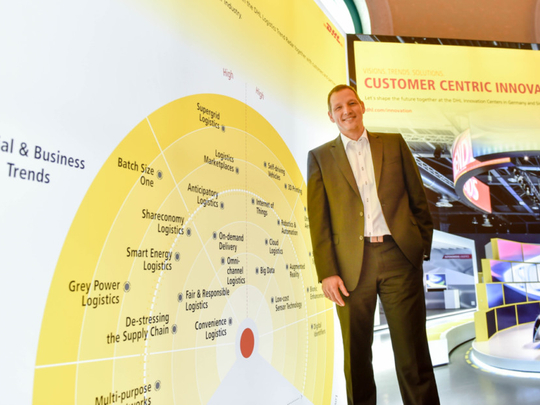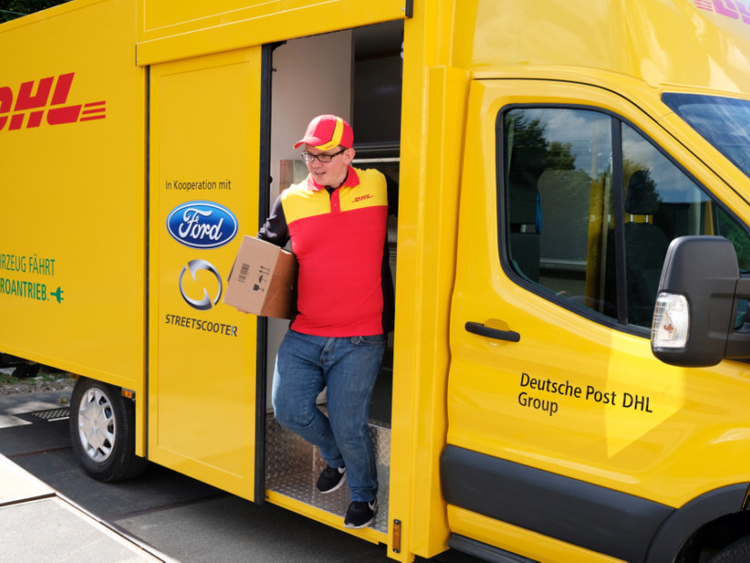
Dubai: A senior executive from logistics giant DHL has suggested that drones as a method of delivery might be slightly overhyped, with mass adoption of unmanned aerial vehicles (UAVs) still some way off.
Headlines over the past year have pointed toward a growing interest in drones for the fulfilment of deliveries, particularly in the retail sector.
Back in November 2016, Domino’s Pizza delivered a pizza to a customer in New Zealand via a drone. Around the same time, US e-commerce giant Amazon announced that it was exploring the use of UAVs to fulfil orders. It made test deliveries in 2016 to two customers in the UK, followed by a demo drone delivery at its robotics conference in March 2017.
More recently, Boeing unveiled a drone that could transport cargo weighing up to 500 pounds (227kg) at CES in Las Vegas, further fuelling hopes from some quarters that drones were set to become a mainstay in the logistics industry.
The reality, however, is not so straight-forward.
Markus Kückelhaus, the vice president of innovation and trend research at German multinational Deutsche Post DHL Group, told Gulf News on Thursday that the mass adoption of drones in the logistics sector was still some way off, as it currently fails to meet a key requirement in his line of work: Consolidating volume to create an efficient network.
“A drone delivery is just a point-to-point network that you’re running, so there you need to be a bit more careful about what is feasible, what makes sense, and what is pure hype,” Kückelhaus said.
DHL itself is no stranger to drone deliveries: It has run successful tests in rural areas, including transporting medications and other urgently needed goods to the German island of Juist, as well as to a remote mountain region in Europe.
“So we tested that, we’re still working on that, but what we need to see is regulations take a step further, so you have dedicated areas where drones are allowed to fly,” he added.
“There’s still quite a lot that needs to be developed before we see city, or urban delivery, with drones being used.”
Refusing to be drawn on whether he felt that drone deliveries were pure hype, Kückelhaus instead said: “I would always say, just looking at our trend radar, it’s medium impact, and further than five years away.”
On DHL’s annually released trend radar, a technology that is low impact and has a long-term implementation date of over five years, is classified as having only an incremental chance of creating new opportunities.
Instead, he offered the DHL StreetScooter as a “much more important” alternative to drones, noting the electric vehicle’s ability to deliver parcels in an efficient, clean way.
“Just imagine an electric vehicle with no noise emission, no carbon emission, driving at night, delivering parcels to either lockers or your trunk, not disturbing anyone, and also at times when there’s no traffic,” the senior executive said.
“That’s the scenario I believe in much more than thousands of drones flying around to deliver parcels,” he added.
Meanwhile, Kückelhaus dismissed the notion that DHL was now competing with Amazon, also one of its biggest customers.
“Of course he’s also moving in to logistics, so people might ask if he’s a customer or competitor, but I would quote Amazon as saying that if everyone offered the logistics solutions that DHL offers in every region, he wouldn’t need to go in to logistics,” the DHL executive said.
On DHL’s relationship with Amazon, particularly as it pertains to the UAE following the Seattle-based firm’s acquisition of Souq last year, Kückelhaus said that it was a “great opportunity for retailers,” and a “win-win situation for both.”
“E-commerce in the region is booming, and it’s a great opportunity for us to grow too,” he added.












